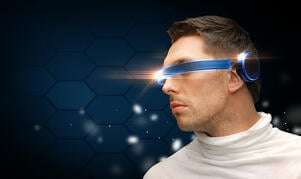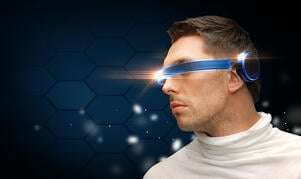Sadly, what started out as a mind-blowing phenomenon, bringing excitement and generating a lot of buzz about wearable technologies, has died before hitting store shelves. Evidently, we’re talking about Google Glass. Launched last year, Google Glass was considered the future of technology.
 What has happened in the meantime? What did Google do wrong? Well, no one can deny that Google Glass is cool…but – yes, there’s a ‘but’ – the product has been plagued by a series of issues, such as poor battery life, buggy voice controls and inability to adjust certain features. All these prevent users from enjoying this new technology. How will this impact the future of ERP and other wearables?
What has happened in the meantime? What did Google do wrong? Well, no one can deny that Google Glass is cool…but – yes, there’s a ‘but’ – the product has been plagued by a series of issues, such as poor battery life, buggy voice controls and inability to adjust certain features. All these prevent users from enjoying this new technology. How will this impact the future of ERP and other wearables?
Why People Don't Like Glass
Google Glass not only delivers an easier and more efficient way to access and manage data, but also proposes a new way of interconnecting our physical and digital worlds. Thus, this new technology was expected to have a favorable impact on the future of ERP, positively affecting various business sectors, from manufacturing to services and retail.
Unfortunately, people aren’t willing to overlook poor performance just because Google Glass is in an early stage of development. On the contrary, most people are strongly criticizing the negatives, which means that the future of Google Glass along with its role in ERP is quite uncertain. Below are a few factors explaining why Google seems to have missed the boat.
- Battery life. Although estimated to last all day long, operations like video recording and calling, can drain Glass’s battery life very quickly. In fact, some beta testers reviewing the product reported that battery life was actually close to three hours when they used more intensive features via Bluetooth or WiFi. This isn’t good for a gadget that’s supposed to provide alerts and notifications 24 hours a day.
- Settings. Glass doesn’t allow you to adjust screen brightness and volume, re-arrange apps, disable Bluetooth and WiFi, enable a silent mode and modify screen timeout. The inability to personalize the device is a very big issue, preventing people from enjoying a real user-friendly experience.
- Controls. This device can be controlled via a touch panel and voice commands. However, beta testing has shown that Google Glass picks up commands without being required to do so. Additionally, Glass “understands” incorrectly at times, which may result in texts with grammatical errors and messages sent to wrong recipients. When errors are detected, users must cancel the entire message and create a new one from scratch.
- Getting Used to It. Some beta testers have reported disorientation, inability to focus on other things, headaches and even nausea during the adjustment period.
So, what’s the main problem with Google Glass? Shortly, it can’t replace anything except, maybe, for a digital camera. However, the phone in your pocket already does that.
Now, we don’t say that Google Glass is useless. It’s a great starting point. However, Google must stop toying around and turn Glass into a reliable device that exceeds expectations. Why? Merely because a poor-performing wearable device can lead to wrong perceptions about wearable technologies, negatively impacting future developments.
The Future of ERP: Going a Step Further
Wearable devices enable hands-free communication, allowing people to access data and connect with others while doing different things. For instance, someone lying under a heavy machine, trying to repair it, could use Google Glass to watch instructional videos or to get in touch with a specialist capable to explain how certain tasks must be performed.
But, wearable technologies don't have to stop here. Remapping the path toward powerful, almost unlimited tech apps, these tech advancements are expected to revolutionize not only the future of ERP, but also our daily lives. Soon, we’ll be able to use Google Glass or something similar to it to find restaurants, to buy products or to pay our bills. With these new technologies, possibilities are endless.
In conclusion, Google Glass should be considered an early representative of wearable technologies, filling in a critical gap in this climate of economic uncertainty. With more and more enterprises turning to innovation to ensure a prosperous future, your organization will eventually need these new technologies in order to boost its economic competitiveness.





